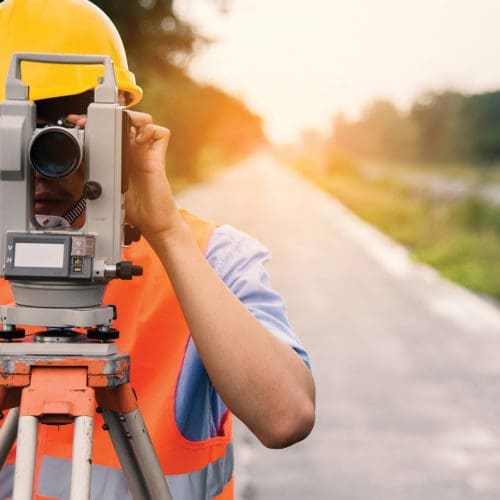Automated Valuation Models – the Future of Surveying?
May 2023Introduction
An automated valuation model (“AVM”) is a statistics-based algorithm which utilises available data such as comparable sales information, market trends and property characteristics to provide an estimate of the market value of a property.
The key benefit of using an AVM is that it provides a lender or borrower with a market value figure at the press of a button, without having to wait for a surveyor to attend a site visit or prepare a report. There is also the benefit of providing a level of consistency as human error will be removed.
AVMs have become increasingly sophisticated in the last few years, likely triggered by the limitations placed on surveyors during COVID restrictions. There are now a growing number of firms offering remote valuation services. For example, it was announced recently that high street bank, Halifax would be partnering with a valuation service provider to carry out remote valuations for re-mortgages in specific circumstances.
Further, Rightmove have announced that homeowners will have access to a new property estimation tool called ‘track my property’ which will give access to an estimated range considered to be the market value of the property. Rightmove have flagged that this tool should only be relied upon as a rough guide and that homeowners should reach out to a local surveyor if they do intend to sell their property. This tool will be launched this month. However, there is already an automated valuation model for lenders on the site which is stated to be used to value 400,000 properties a month.
As AVM technology continues to develop, we can expect that more lenders will start to utilise remote valuations as a mechanism to reduce costs and speed up mortgage processes.
However, AVMs give rise to potential serious risks and exposure which key stakeholders such as lenders, surveyors and insurers should consider carefully.
- Available Data Sources
Different surveying firms will have access to differing amounts of data sources and local knowledge. The data will need to be regularly collected and there will need to be an information trail so that it is clear what information the AVM has relied upon in case of a dispute.
Surveyors will need to consider the potential security and privacy implications of the information utilised by an AVM carefully to ensure that data regulations are not breached.
- Condition of the Property
Some AVM models allow the owner of a property to input photos to enable the artificial intelligence to assess the condition and the characteristics of the property for the purposes of establishing the market value.
A borrower, wishing to maximise the value of its property, could very likely be subjective when submitting photos showing the property condition. This could lead to exaggerated market value figures.
In this circumstance, a surveyor should seek to include a clause in its terms and conditions to explain that it should not be responsible for any impact an act like this by the borrower may have on the market value of the property. However, whether this term is incorporated or not may be down to the commercial bargaining power between the lender and the surveyor, as a lender would equally not wish to bear the consequences of this risk.
- Market Uncertainty
Currently, there is growing uncertainty in the market as the cost of living continues to rise and house prices have started to fall. Surveyors are also reacting to an increased demand to issue EWS1 forms for certain residential properties at risk of containing combustible cladding.
There are concerns that AVM technology is not advanced enough to provide accurate values where there are unprecedented or new market conditions, as it cannot rely on historic patterns when producing values. If this is correct, this would mean that the technology cannot accurately provide market values in today’s economy. Further, there may be limitations on AVMs ability to be used for properties potentially affected by fire safety remediation works.
It has been suggested that RICS could provide an accreditation service for AVMs to alleviate these concerns, and this has approach has already been utilised in the US. At this stage, RICS are reluctant to do so, as the fast-moving pace of the technology gives rise to concerns that any accreditation provided could create legal, risk and insurance implications for RICS.
- ESG
With the rise of environmental, social and governance (“ESG”) measures as a driver of the market value of a property, AVMs will need access to data showing the energy performance of a property. This could include Energy Performance Certificates (EPCs) and the Building Research Establishment’s Environmental Assessment Method (BREEAM). Surveyors will need to ensure that access is provided to this data.
This is another area where AVMs may struggle to be accurate as this is a fast-changing position and the technology cannot rely on an historic pattern of data.
Comment
AVMs are a useful tool to assess the market value of a property quickly and efficiently. In the short term, AVMs are a useful mechanism to sense check or provide quality assurance to an existing valuation.
Some lenders are beginning to rely on AVMs in specific circumstances where it is considered that there is low risk. For example, for re-mortgage purposes where there have been no changes to the property, as opposed to first-charge lending.
There is also an increase in valuation surveyors who are offering ‘hybrid’ AVM services, where the technology is utilised to give a starting point for a valuation and then this figure is checked by a surveyor who decides whether it is then necessary to inspect the property.
It is highly likely that the use of remote valuations will continue to increase as the technology develops. We expect that the insurance industry will soon react to the increased use of AVMs as underwriters will need to incorporate the risk of surveyors utilising AVMs into professional indemnity insurance policies. We await further developments with interest.
Beale & Co have substantial experience defending claims against surveyors. Should you require any further assistance or have any queries on the above, please contact Jo Lewis or Priya Thakrar.
Download PDF








